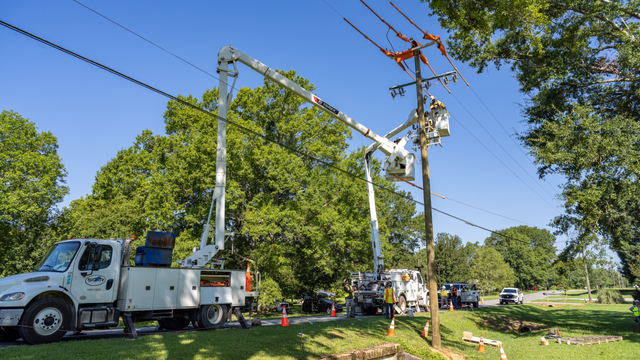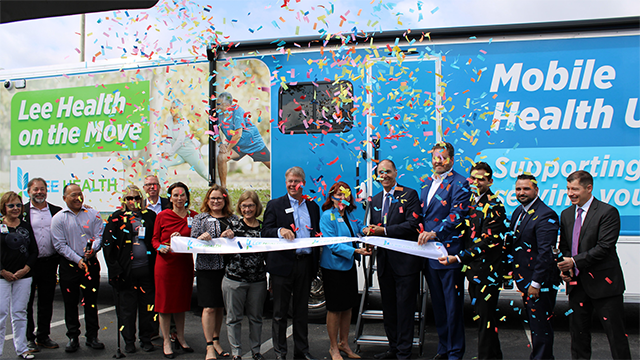By Jeremy Klingel and Stuart McCafferty
Imagine customers, third parties and even utilities participating in a market in which their investments in renewable energy and other distributed energy resources could be monetized. The uptake of clean energy would dramatically accelerate, creating new opportunities for innovation and an open, inclusive energy economy. It’s the next evolutionary step to profoundly transforming the energy industry into something where everyone can win and it’s happening now.
When asked if their utility anticipates the introduction of distribution markets, nearly four of every 10 respondents — 37 percent — to Black & Veatch’s 2019 Strategic Directions: Electric Report survey replied affirmatively. An additional 47 percent answered that they weren’t sure. Most likely, those in the “yes” camp come from areas where there is greater penetration of distributed energy resources.


Today, we’re at a pivotal point. Distributed energy resources exist in all markets and will certainly grow, meaning that some who replied “don’t know” to this year’s survey may say “yes” in a year or three. Those who don’t know may be leaning toward “yes” today, but, in truth, no one yet knows how distribution markets will play out in places where they’re already being supported by regulators, such as New York and California. Until markets gel in those testing grounds, regulators in other parts of the country will eagerly watch for distributed energy resources examples and learn from them before forming their own opinions for distribution market models and creating strategies to determine how to invest in renewable energy.
Why are Distributed Renewable Energy Markets Emerging?
Some 40 percent of survey respondents said the primary driver for distributed renewable energy markets was that they’d serve as a “strategy for accelerating the transition to a more distributed grid model.” More than half of survey respondents — 55 percent — believe that distributed renewable energy resources will dominate utility service offerings in the next 15 years.
What will those offerings be? Distributed energy resources examples might include the services of a market operator or, if a third-party operates the market, utilities could bid their resources into that market the same way they provide ancillary services for an independent system operator.
The market landscape has changed in such a way that the evolution of a distribution market seems natural and logical. After all, solar installations continue to expand. A recent U.S. Solar Market Insight Report from Wood Mackenzie and the Solar Energy Industries Association (SEIA) forecasts 25 percent growth in 2019 compared to 2018, and expects more than 13 GW of installations this year.
The lion’s share of that investment is coming from utilities. Sixty-one percent of the solar installed in this year’s first quarter was done by utilities. During that same period, the residential market saw 603 MW of residential solar installations, which represents a six percent increase. Commercial and industrial (C&I) deployments were down, but the report’s authors believe new community solar mandates in New York, Maryland, Illinois and New Jersey will help reinvigorate the commercial solar segment starting in 2020.
It's also important to note that with renewable energy investment comes an increased need for storage. Analysts at Reportlinker predict an 18 percent compound annual growth rate for energy storage systems between now and 2023 thanks to new initiatives in renewable energy.
Another driver for new energy distributing is the rising popularity of electric vehicles. EVs are finally starting to come online to a scale that makes them a potential dispatchable grid asset, particularly for companies approaching them from a fleet perspective. More companies are beginning to see EV potential in the light- to mid-duty vehicles used by players such as FedEx or local Walmart delivery. These vehicles will require a lot of power and have significant demand response capacity. At the present time, EVs make up only about one percent of fleet vehicles, but Navigant Research expects the penetration to reach 12 percent by 2030.
In short, distributed energy resources are here to stay, and commercial customers are becoming more sophisticated in their efforts to learn from distributed energy resources examples about how to invest in renewable energy. As it turns out, there are plenty of aggregators to help them do it, as well as other third-party players who want to do things like invest in grid-scale solar or batteries and monetize those investments, too.
Next-Gen Grid
The generation mix is changing dramatically, and, as noted earlier, those who invest in energy resources want to optimize their renewable energy investment returns. California remains on the forefront of successful distributed energy resources examples. On the consumer side, California’s Demand Response Auction Mechanism (DRAM) has helped residential consumers participate in a utility-based demand response program to support the reliability of the California Independent System Operator. Earlier this year, the California Public Utilities Commission (CPUC) issued its final report on the DRAM pilots. More than 52,000 customers were enrolled in DRAM in the 2017 delivery year, with 98 percent of them being residential customers.
For many California customers installing rooftop or on-site solar PV systems, payback occurs in about two years because of the high costs of electricity in the state. Introducing distribution markets in other parts of the country could bring returns on investments that are typically in the seven-to-10-year range down to something more in line with California’s shorter average payback period.

On the utility side, market creation allows today’s power providers to earn against orchestration of all the energy resources connected to the grid while maintaining grid safety and reliability. Forty-four percent of survey respondents named aging infrastructure as one of the most challenging issues facing the electric industry today (Figure 20). New energy distributing solutions are expected to help update aging grid assets by changing the way upgrades are accounted for.
Under today’s business practices, when utilities are faced with infrastructure that needs upgrades or replacement, they spend money, then have regulators approve rates that allow for the utility investments plus a little for shareholders. The problem is that with today’s common rate-recovery approach, the infrastructure can be replaced only when there is an appropriate load growth curve to balance the costs. When residential or commercial customers put solar and storage on their properties, it chips away at the way utilities traditionally monetize their technology and infrastructure investments.
New Ways to Leverage Distributed Renewable Energy Assets
A newer distributed renewable energy investment play would allow utilities to manage grid stability and reliability while potentially generating revenue through a transaction-fee or fixed monthly fee model similar to how it’s done in the telecom and cable industries. Meanwhile, this approach would add plenty of other new energy distributing benefits for utilities and consumers alike.
Better orchestration of distributed energy resources will give utilities a way to leverage non-wires alternatives to manage constrained circuits and substations on their systems. Using a distribution market approach, DER assets will compete and can be bid into the market, ultimately lowering the costs for electricity customers. DER asset bids will be valued compared to other market bids and, as markets should, the distribution market operator will call on the least-cost resource at the time.
Distribution markets could also add a new layer of resilience to the system. Recently, one utility in south Texas estimated that there were more than 250,000 unregistered backup generation devices that neither the utility nor its independent system operator knew about. Consider how much value those resources could provide in the event of another superstorm. If the utility or system operator gains control over assets that can support reliability, customers with backup resources are able to participate in markets, thereby gaining faster return on investment from their energy investments, while more people would be able to weather the storm with the lights on.
Unanswered Questions Linger
A renewable energy investment approach will allow industry players to bring more renewables online to benefit more people as well as shareholders. There will be a greater incentive for customers to add renewable assets, and it will be easier for utilities to connect these assets to the grid without taking risks with reliability or power quality.
Given the benefits, why haven’t regulators outside of frontrunner states like California and New York started pushing utilities toward such a model? In part because there still are too many unanswered questions.
For one thing, regulators need to see how distribution markets will provide value to a variety of interested parties, including customers and environmentalists as well as distribution operations and the utilities themselves. Second, marrying grid operations with distribution market operations requires organizational and technological changes that are still maturing. Third, regulators need to understand how the market could energize or balance the system with least-cost resources. Fourth, utilities and regulators alike must start talking about how markets will operate. How do we hone our strategy, and how do we tie that directly to customer enablement? How do we strategize how to invest in renewable energy in a way that benefits all parties?
Another hurdle is the reality that distributed renewable energy technologies cannot be proprietary. There must be an overarching sense of interoperability with the adoption of Internet of Things DER messaging standards such as OpenFMB and Institute of Electrical and Electronics Engineers 2030.5 standards. This is critical from a technology standpoint so that the maximum number of players can participate, as well as from a transparency point of view. In other words, customers will need to understand what it is they're signing up for.
What’s Next for Distributed Renewable Energy Investment
Regulators and utilities must work together to answer these new energy distributing questions. Utilities will need to leverage all their internal wisdom and understand that these are not issues that can be solved with one portion of the business. The distribution operations staff will need to team up with system planning teams, generation, transmission operations, customer service and more to figure out what needs to happen and what regulators — who will empower the changes — need to know.
In the end, this will be more of an evolution to the business of electricity than an end to it. It will require taking the economic value of power generation and storage — something everybody understands today — and broadening the aperture to ensure the capture of not just those utility-owned assets but also everything available on the network. A whole-market approach to renewable energy investment is the best way to bring more into the fold and look at a more comprehensive picture of power provision today.
–
Jeremy Klingel is the global distributed energy business line leader for Black & Veatch’s power business. Klingel has more than 23 years of experience, including the past four years with Black & Veatch’s management consulting business. He has led more than two dozen smart grid development projects and has driven the operational roadmap behind advanced distribution management and end-user experience.
Stuart McCafferty is a managing director for the growth and performance offerings in Black & Veatch management consulting. McCafferty is a National Institute of Standards and Technology fellow for community resilience, an industry expert for Energy Central and vice chair for OpenFMB User’s Group. He previously served as vice president of EnergyIoT at Hitachi and was vice president of operations for the Smart Grid Interoperability Panel.





